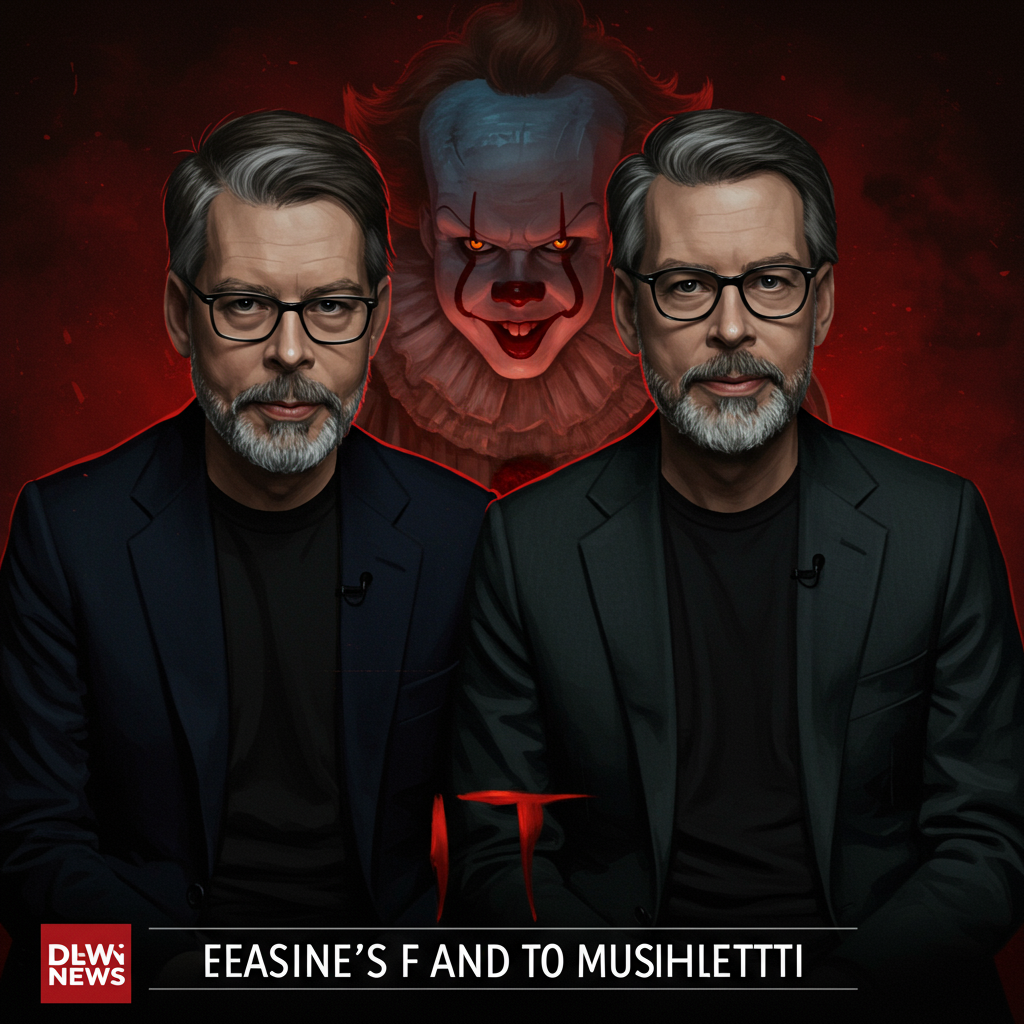Stephen King’s literary universe stands as a bedrock of modern horror, inspiring over 50 films and countless series. Among these, few have captivated audiences and shattered box office records quite like the big-screen adaptations of It. Director Andy Muschietti’s films didn’t just dominate the Stephen King cinematic landscape; they redefined horror’s commercial ceiling, grossing over a billion dollars collectively. This unparalleled success hinged on an undeniable “It factor”: an otherworldly, toothy clown, Pennywise, luring children to their doom. The initial encounter with Bill Skarsgård’s Pennywise, devouring Georgie Denbrough, proved instantly iconic and effective nightmare fuel.
These film adaptations excelled at what many call “Conjuring coded” horror. They masterfully crafted tension, unleashed effective jump scares, and delivered palatable, weightless thrills. This formula resonated deeply, drawing massive crowds for its sheer popcorn entertainment value. Yet, for devoted readers of King’s colossal 1,000-plus-page novel, the cinematic experience often feels starkly different from navigating the profound depths of his original text. The novel It is far more than a monster story; it’s a chilling excavation of how a primordial evil corrodes the fictional town of Derry, Maine, over centuries. Pennywise, reawakening every 27 years, doesn’t just feed on children but also mirrors and exacerbates the era’s anxieties, from early settlers’ fears to 20th-century economic hardships and racial injustices. Crucially, the novel spotlights Derry’s community-wide indifference and complicity in the suffering, a theme often muted in adaptations.
The Promise and Pitfalls of HBO’s Prequel
The commercial triumph of the It films, particularly their success as ’80s-set coming-of-age tales for the Losers Club, made it inevitable that Hollywood would continue to mine King’s masterwork. This brings us to It: Welcome to Derry, an eight-part HBO prequel series executive-produced by Muschietti. Set in 1962, preceding the events of the 2017 film, the series draws inspiration from Mike Hanlon’s historical interludes in the book. It introduces Will, a young Black boy who moves to Derry during Pennywise’s feeding cycle. He befriends other outcasts, uncovering the monstrous truth while authorities unjustly blame a local Black projectionist for disappearing children.
For fans of the movies, Welcome to Derry offers familiar pleasures. Viewers will find another iteration of the Losers Club and more showcases for Pennywise to manifest as characters’ deepest fears. Highlights include a screaming lampshade made of human skin and a mother who died in childbirth. However, what works as a quick, shocking jump scare in a movie often falters in a serialized TV format. The predictable rhythms of these attacks, with children wandering alone or turning away just as the monster disappears, quickly become cliché. The series struggles to sustain genuine creepiness across its extended runtime, sometimes feeling less like terror and more like a checklist of predictable horror tropes.
Missed Opportunities for Thematic Depth
More significantly, Welcome to Derry largely sidesteps the novel’s profound themes, despite its longer format. With one notable exception—a scene where Will’s mother witnesses bullying, dismissed as “boys will be boys” by townsfolk—the series fails to deeply explore the pervasive community complicity central to Pennywise’s reign. Instead, it attempts to tackle Cold War tensions and the Civil Rights Movement, with the Black projectionist storyline serving as a clear commentary. Yet, even with acclaimed talent like Emmy and Oscar winner Cord Jefferson involved, these explorations lack the incisiveness expected from HBO’s prestige pedigree. The nuanced examination of societal rot that King wove into Derry’s fabric remains largely untouched.
Stephen King’s ability to imbue his stories with genuine thematic weight is evident across his bibliography. Take Lisey’s Story, which he considers his favorite, a deeply personal meditation on mortality, imagination, and the enigmatic process of storytelling itself. This novel embraces the “weirdness” of his fiction, exploring concepts like “Boo’ya Moon” and “the pool where we all go down to drink” as metaphors for creativity and subconscious realms. Similarly, characters like Holly Gibney, King’s “most anxious” yet profoundly heroic creation, demonstrate his capacity for evolving, nuanced bravery, proving strength isn’t just physical but an inner willingness to act despite deep-seated fears. These examples highlight King’s personal and thematic range, which can be challenging for adaptations to fully capture.
When Adaptations Get It Right (and Wrong)
The challenges of adapting King’s works are well-documented. For instance, “The Eyes of the Dragon,” a “surprisingly family-friendly fantasy” with Dark Tower connections, has seen three canceled projects. Its struggles stemmed from being “off-brand” for King, its characters being “not that memorable,” and its confused target audience—a children’s book with adult themes like marital struggles. This illustrates that not every King story is easily translated, and success often hinges on understanding its core identity.
In contrast, recent adaptations show how it can be done well. The remake of Salem’s Lot on Max, for example, garnered praise for “raising the bar.” Instead of merely replicating the classic 1979 mini-series, director Gary Dauberman opted for a faster pace, introducing “mayhem faster” and avoiding the three-hour slow burn. This strategic deviation, rather than a literal transcription, created a more effective contemporary horror experience. A new Cujo remake is also in development at Netflix, promising another fresh take on a classic. These successes underscore that creative reimagining, rather than rigid adherence or superficial scares, can yield compelling adaptations.
The Military Subplot: A Step Too Far?
However, Welcome to Derry takes a bizarre turn with a subplot so outlandish it threatens to derail its more serious aspirations. Will’s father, an Air Force major stationed in Derry, uncovers a military general’s plan to capture Pennywise and weaponize it as a national security asset. This general, having nearly been eaten by Pennywise as a child, believes the monster is “how to keep this country safe.” This concept, reminiscent of Jurassic World‘s ill-fated velociraptor weaponization, stretches credulity to its breaking point. It raises a litany of questions: How many officials know about Pennywise? Why aren’t Derry residents warned? Could Pennywise have prevented the Cuban Missile Crisis? The mere existence of a military protocol for a transdimensional murder clown forces the series into “high-end schlock” territory, undermining any pretense of prestige television.
While Welcome to Derry occasionally taps into profound ideas—like Pennywise tormenting the marginalized, those from broken homes, or diverse backgrounds—these well-intentioned themes are constantly battling the show’s inherent silliness. Bill Skarsgård’s Pennywise, despite sparse appearances, remains effective and chilling, providing the series’ strongest asset. Yet, those hoping for a deeper dive into King’s richer themes—the silent festering of trauma, the cyclical nature of violence, or the pervasive rot of community complicity—will likely be left wanting. Welcome to Derry might be a fresh entry in HBO’s lineup, but its efforts, much like Pennywise’s victims, often seem to go down the drain. Perhaps the real curse plaguing Derry isn’t Pennywise itself, but our collective inability to simply leave well enough alone.
Frequently Asked Questions
What key themes do ‘It’ adaptations often miss from Stephen King’s novel?
Stephen King’s original It novel delves deeply into themes beyond just a monster hunting children. Adaptations frequently miss the nuanced exploration of Derry, Maine’s pervasive community complicity in its own suffering, the town’s historical corruption by primordial evil, and how Pennywise reflects and exacerbates specific social anxieties across different eras (e.g., racial injustice, economic hardship). While films capture the coming-of-age and monster elements, the deeper societal commentary and psychological horror of collective indifference are often sidestepped.
How does ‘Welcome to Derry’ attempt to expand on the ‘It’ lore?
It: Welcome to Derry, the HBO prequel series, expands the It lore by setting its story in 1962, prior to the events of the films. It draws inspiration from Mike Hanlon’s historical interludes in the novel, focusing on a new group of outcast children. The series introduces new characters, including a young Black boy named Will, and attempts to comment on historical tensions like the Cold War and the Civil Rights Movement, with a plotline involving a Black projectionist being unjustly blamed for child disappearances.
Is ‘It: Welcome to Derry’ worth watching for dedicated Stephen King fans?
For dedicated Stephen King fans, It: Welcome to Derry offers a mixed bag. Those primarily seeking more appearances from Bill Skarsgård’s Pennywise and additional jump scares will likely find some enjoyment. However, if your interest lies in adaptations that faithfully or innovatively explore the deeper, more profound thematic layers of King’s novel—such as community complicity, the silent festering of trauma, or the pervasive evil of Derry—the series may disappoint. Its reliance on cliché horror tropes and a “jaw-droppingly dumb” military subplot often overshadow its attempts at deeper commentary.


